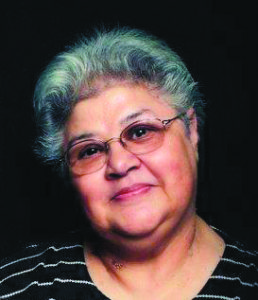

When World War I broke out, the nation already knew “Fast Eddie” Reichenbacher as a skilled race car driver for General Motors. When America entered the war in 1917, his fame took second place to his patriotism. Eddie was among the first to enlist. It was during this time that Rickenbacker anglicized his last name to avoid anti-German sentiment.
Born October 8, 1890, as Edward “Eddie” Reichenbacher, Eddie Rickenbacker was the third of eight children of German-speaking Swiss immigrants who had settled in Columbus, OH. He attended school until the age of twelve when, following the death of his father, he ended his education to lend support to his family.
After helping Colonel Billy Mitchell of the US Army Air Service fix his car, Eddie seized an opportunity. Still wanting to fly, he asked Mitchell to recommend him for flight school. Though considered old (he was 27), Mitchell arranged for him to be sent to flight school.
He became the first American Fighter Ace when he downed his fifth enemy airplane on May 28th.
The following day, Eddie led an early morning patrol. He spotted seven enemy aircraft and immediately engaged the planes in a dogfight. During the event, Eddie downed two planes earning him his eighth Distinguished Service Cross.
By war’s end, Eddie had won 26 air battles over the skies of Europe. Eddie not only received eight Distinguished Service Crosses, he was also awarded the French Croix de Guerre and Legion of Honor. President Herbert Hoover recognized Rickenbacker’s heroic efforts twelve years later. Hoover elevated his eighth Distinguished Service Cross to a Medal of Honor, the highest honor given in the military.
While flying as a passenger to Atlanta in February of 1941, Rickenbacker’s plane crashed on a mountain due to fog. Rickenbacker’s injuries included a fractured skull, other head injuries, a shattered left elbow with a crushed nerve, a paralyzed left hand, several broken ribs, a crushed hip socket, a pelvis broken in two places, a severed nerve in his left hip, and a broken left knee. Rickenbacker’s left eyeball was also blown out of its socket.[30] Furthermore, debris pinned him next to a steward’s dead body. Regardless, Rickenbacker quickly took charge. He sent the healthiest to go for help and kept the rest of the survivors calm. It took many months in the hospital, followed by a long time at home, for Rickenbacker to heal from this multitude of injuries and to regain his full eyesight.
When America entered World War II, a fully recovered Rickenbacker again offered his services. Secretary of War Henry Stimson sent him to assess European Allied bases.
Stimson then sent Rickenbacker to the Pacific on a similar mission, along with a personal task. Rickenbacker was to personally deliver a secret reprimand from Stimson to MacArthur for publicly criticizing the Roosevelt Administration.
With orders in hand, Rickenbacker boarded a plane in Hawaii in October 1942. Of the eight men on the B-17 Flying Fortress, he was the oldest and only civilian. When they went drastically off course en route to Canton Island, they made a crash landing in the Central Pacific Ocean. The eight injured men jumped aboard life rafts as the plane quickly sank.
Once again “Captain Eddie” took the leadership role. He rationed the only food they had, four oranges, for six days. To keep their spirits high, they said prayers, held devotions, and sang hymns. Millions at home prayed as well.
After eight days, survival seemed bleak: their food and water were gone.. As Rickenbacker reclined for a nap, a seagull landed on the cap he had placed over his face. He stealthily snatched it and rung its neck. The starving men ate the meat while the remains served as bait to catch fish, whose remains also became bait for more fish.
Occasional rainfall supplied fresh water, which they collected and rationed. The cycle continued for twenty-four days until a passing US Navy Kingfisher ended their nightmare on November 13th. Only one man, who was already ill, perished during the ordeal.
Despite dehydration, near-starvation, and severe sunburn, Rickenbacker completed his mission before returning home.
For all of Rickenbacker’s contributions during the 2nd World War, he received the Medal of Merit.
During World War II, Rickenbacker vehemently spoke out against Roosevelt’s New Deal, seeing it as little more than socialism. During the 60’s, he sounded the alarm of destructive government programs. He gave speeches praising America’s greatest gift of the “freedom to go broke.” Rickenbacker believed that one only needed “a chance” to achieve in America.
In 1922, Rickenbacker married Adelaide Frost Durant; their marriage lasted until his death on July 27, 1973. He was buried in his hometown of Columbus, Ohio.
Edward Rickenbacker was a hero. His acts of bravery were astounding. When situations arose that needed attention, Rickenbacker acted.
Sadly, modern American society has taught our children that most of us are victims of something. Rickenbacker never thought of himself a victim. He turned every situation into a benefit for himself and those around him. This is the stuff of which heroes are made. This is the stuff that made America Great!
Sources: www.Constitution.com; www.militaryhistory.com; www.wikipedia.com
No Comments
Leave a comment Cancel